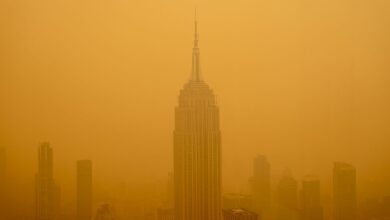Before I came to New York city, I lived the details of New York life through an American television comedy series called Sex and the City. I had a close relationship with the heroines of the famous TV series. I lived with them the details of New York women’s lives — which seemed characterized prominently by freedom.
Four women who made all the decisions with regard to their lives, each with her own character and goals, they share the city with men on an equal footing, in a way that seemed unimagineable. They live the small details that transform the daily stuff of life into a sphere of self-realization and ambition.
Four women, each with her own lifestyle — but this difference doesn’t harm their friendship.
The series is narrated by sex columnist, Carrie Bradshaw, who tells the lives of women in the sleepless city. The story follows the lives of her friends: the serious rational character Miranda, a lawyer; Charlotte, respected art dealer who once dreamed of owning her own gallery, the romantic character; and Samantha, the oldest and most sexually confident of the four.
Samantha is an independent businesswoman. She is confident, strong, and outspoken, and calls herself a "try-sexual" (meaning she'll try anything once).
I lived with these women, via the screen, following their lives, so packed with events both romantic and tragic, including some close to our lives as Arab women and others so distant that we can’t imagine them happening in public — for religious or social reasons.
I came to New York with a prior assumption that women in the city are chic, lovely, and charming, the eyes of men following their beauty in the street, the women meanwhile happy and inviting. However, I was surprised to find completely different behaviors.
Women here do not experience the kind of sexual harassment so often practiced by men. Their clothing is more than revealing by our standards, but their almost naked bodies does not necessarily provide a provocation to men, who simply turn a blind eye. Tight spaces contain both sexes in the subway, but no one is looking at anyone else, in full respect for privacy.
I was the only one looking at people of both sexes for long periods, with a thousand questions spinning in my head, and I am still looking for an answer to one question. What makes these people different from us to such a degree? Do men here have different genes from our men? Or is the Arabic man more virile and masculine, and should we be thankful to nature for granting us this sort of man?
It didn't take me too long to work out that the aversion of one's gaze here is not ideologically or religiously motivated. Here the law obliges you to respect others, and it guarantees you freedom of expression, clothing and action — so long as it only affects you, rather than impinging upon the freedom of others.
I always considered myself free, practicing my freedom without restrictions. But when I experienced living with women here and followed their movements about the city, I realised how far we are from that sense of sharing public space with the other half of society.
Here in New York, the body does not necessarily refer to sex. Women wear whatever they wish. Moreover, the dictatorship of beauty in the accepted standards for women, which require them to abide by fitness and femininity, applies only to a minority.
I found a city that allows women to live in dignity, freedom, safety, coexisting with men — and not a hint of sex or harassment. Even the signs of expressing love, such as kisses and hugs between lovers, which are familiar in European countries, are almost non-existent here.
Love and sex has its place in the bedroom — and with the consent of both partners.




